Apparently This Is “The Clearest Photo Of Mercury Ever Taken.”
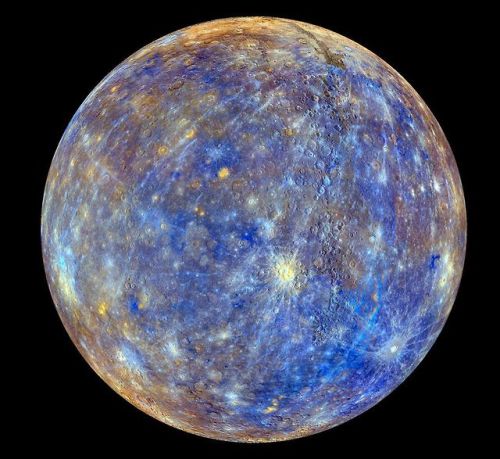
Apparently this is “The clearest photo of Mercury ever taken.”
More Posts from Alitheastronomer and Others
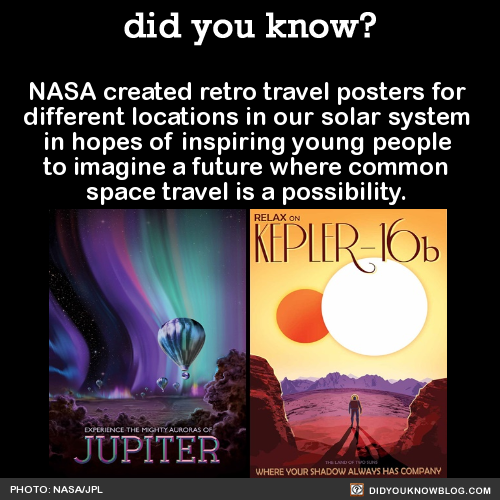
NASA created retro travel posters for different locations in our solar system in hopes of inspiring young people to imagine a future where common space travel is a possibility.

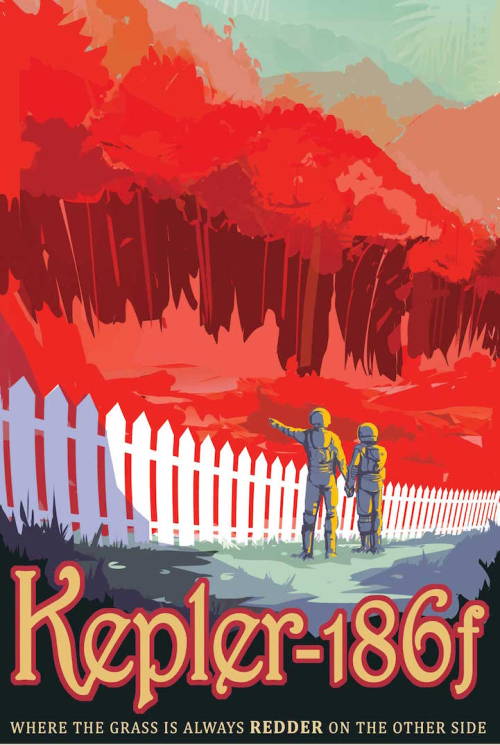


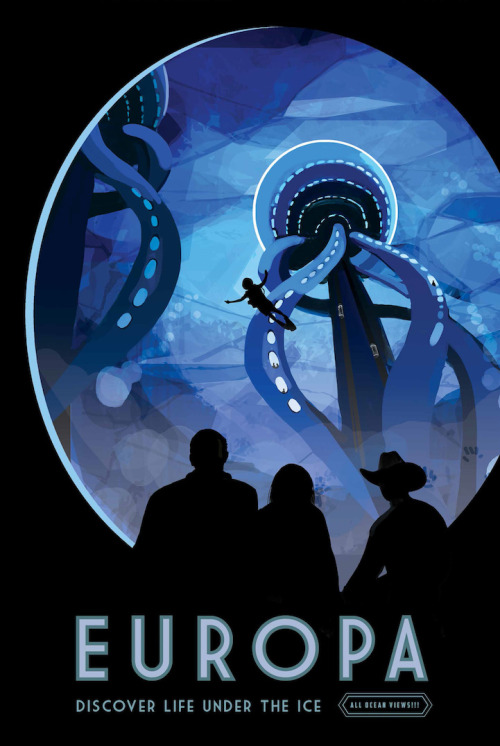
Source
It's amazing how these galaxies, that are so unfathomably huge to us, are actually really fragile and delicate in the scheme of things
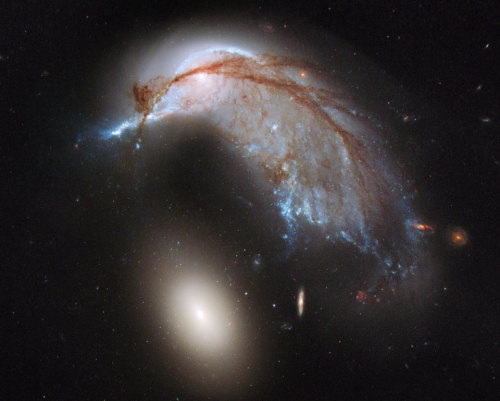
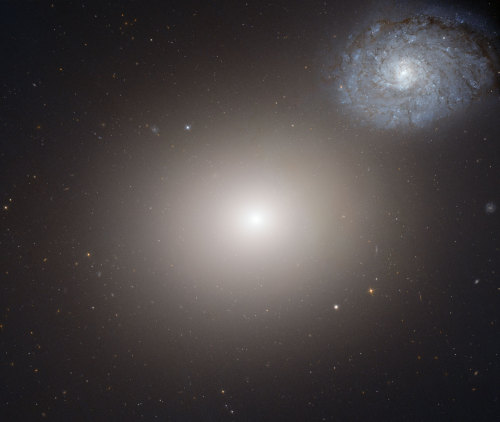
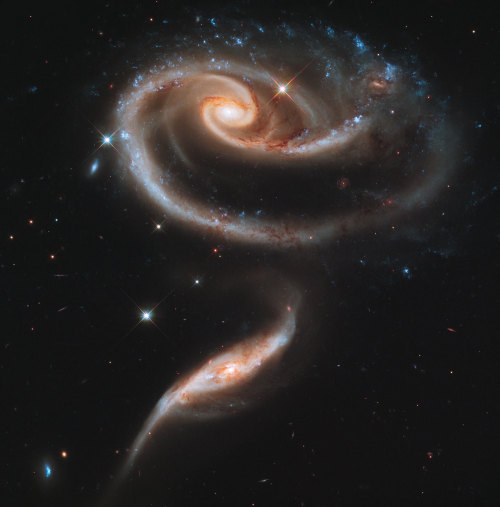
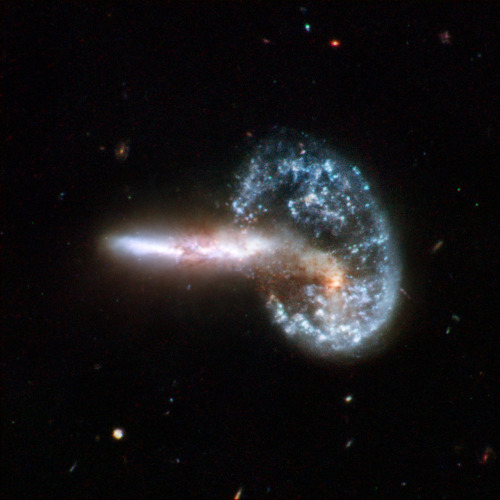

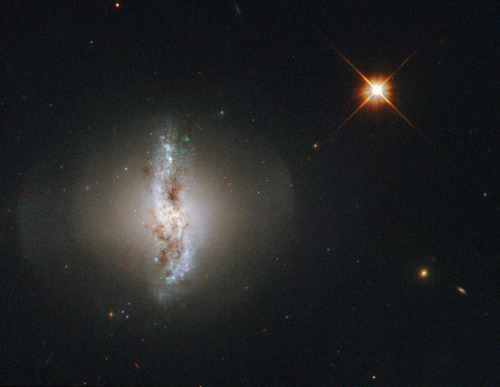
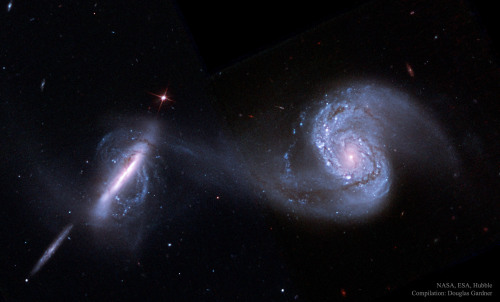



Top 10 Bizarre Galaxy Pairs From Hubble
“The Arp catalog illustrates galaxies in many different stages of a collision:
* prior to their first close pass, * in the collision process, * subsequent to an interaction but before merging, * and in the final merger stages.
Unlike ellipticals, spirals are easily disturbed, often becoming destroyed entirely by such an interaction.”
When you take a glimpse into the deep Universe, beyond the gas, dust, stars and planets of our own galaxy, you enter the realm of the galaxies. In general, they come in two types: the spirals, with neat, orderly arms, and the ellipticals, with a symmetric, bulging shape. But for everything that exists in the Universe a particular way in general, there are exceptions. In the 1960s, astronomer Halton Arp became fascinated with these exceptions, creating a catalog of 338 examples: the Atlas of Peculiar Galaxies. We now know that most of these are galaxy pairs or triplets in the process of major mergers, displaying features such as tidal disruption, stellar bridges, starbursts and occasionally a rare, ring shape.

Transit of Venus(2012) through rain clouds. Canon T3i with 100-400 mm EF lens.

Arp 87:
NGC 3808A (right) & NGC 3808B (left)

How curiosity changes the brain to enhance learning
The more curious we are about a topic, the easier it is to learn information about that topic. New research publishing online October 2 in the Cell Press journal Neuron provides insights into what happens in our brains when curiosity is piqued. The findings could help scientists find ways to enhance overall learning and memory in both healthy individuals and those with neurological conditions.
"Our findings potentially have far-reaching implications for the public because they reveal insights into how a form of intrinsic motivation—curiosity—affects memory. These findings suggest ways to enhance learning in the classroom and other settings," says lead author Dr. Matthias Gruber, of University of California at Davis.
For the study, participants rated their curiosity to learn the answers to a series of trivia questions. When they were later presented with a selected trivia question, there was a 14 second delay before the answer was provided, during which time the participants were shown a picture of a neutral, unrelated face. Afterwards, participants performed a surprise recognition memory test for the faces that were presented, followed by a memory test for the answers to the trivia questions. During certain parts of the study, participants had their brains scanned via functional magnetic resonance imaging.
The study revealed three major findings. First, as expected, when people were highly curious to find out the answer to a question, they were better at learning that information. More surprising, however, was that once their curiosity was aroused, they showed better learning of entirely unrelated information (face recognition) that they encountered but were not necessarily curious about. People were also better able to retain the information learned during a curious state across a 24-hour delay. “Curiosity may put the brain in a state that allows it to learn and retain any kind of information, like a vortex that sucks in what you are motivated to learn, and also everything around it,” explains Dr. Gruber.
Second, the investigators found that when curiosity is stimulated, there is increased activity in the brain circuit related to reward. “We showed that intrinsic motivation actually recruits the very same brain areas that are heavily involved in tangible, extrinsic motivation,” says Dr. Gruber. This reward circuit relies on dopamine, a chemical messenger that relays messages between neurons.
Third, the team discovered that when curiosity motivated learning, there was increased activity in the hippocampus, a brain region that is important for forming new memories, as well as increased interactions between the hippocampus and the reward circuit. “So curiosity recruits the reward system, and interactions between the reward system and the hippocampus seem to put the brain in a state in which you are more likely to learn and retain information, even if that information is not of particular interest or importance,” explains principal investigator Dr. Charan Ranganath, also of UC Davis.
The findings could have implications for medicine and beyond. For example, the brain circuits that rely on dopamine tend to decline in function as people get older, or sooner in people with neurological conditions. Understanding the relationship between motivation and memory could therefore stimulate new efforts to improve memory in the healthy elderly and to develop new approaches for treating patients with disorders that affect memory. And in the classroom or workplace, learning what might be considered boring material could be enhanced if teachers or managers are able to harness the power of students’ and workers’ curiosity about something they are naturally motivated to learn.

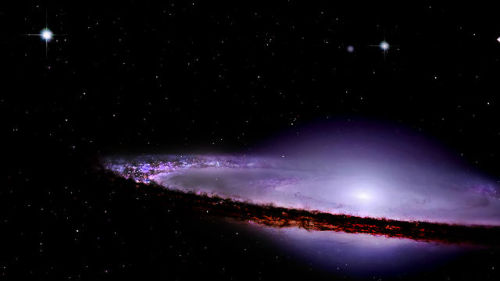
The stunning Sombrero galaxy (seriously, there should be a blog that’s just photos of the Sombrero galaxy)

the most optimistic letter that any human has ever written
Here is a time lapse of the International Space Station flying over the earth.

Orion Nebula taken with:
Optika 650mm-1300mm f/8-16 Cannon T2I 46 half second exposures
-
 rohzzzzz reblogged this · 3 weeks ago
rohzzzzz reblogged this · 3 weeks ago -
 oxygen8destroyer reblogged this · 1 month ago
oxygen8destroyer reblogged this · 1 month ago -
 zyzdzdzyzyzyzyz liked this · 2 months ago
zyzdzdzyzyzyzyz liked this · 2 months ago -
 gagagagagugagaga reblogged this · 2 months ago
gagagagagugagaga reblogged this · 2 months ago -
 2die4crys reblogged this · 2 months ago
2die4crys reblogged this · 2 months ago -
 takemetoyourspeakers reblogged this · 2 months ago
takemetoyourspeakers reblogged this · 2 months ago -
 takemetoyourspeakers liked this · 2 months ago
takemetoyourspeakers liked this · 2 months ago -
 westdayever reblogged this · 2 months ago
westdayever reblogged this · 2 months ago -
 integralpetal liked this · 2 months ago
integralpetal liked this · 2 months ago -
 myxlogkeepsxettingxeleted reblogged this · 2 months ago
myxlogkeepsxettingxeleted reblogged this · 2 months ago -
 mahurutanga reblogged this · 3 months ago
mahurutanga reblogged this · 3 months ago -
 n3v3r3v3rrr liked this · 3 months ago
n3v3r3v3rrr liked this · 3 months ago -
 tailesssheepdog reblogged this · 3 months ago
tailesssheepdog reblogged this · 3 months ago -
 geminice reblogged this · 5 months ago
geminice reblogged this · 5 months ago -
 ultramilkshakeblr liked this · 5 months ago
ultramilkshakeblr liked this · 5 months ago -
 animallovercats liked this · 6 months ago
animallovercats liked this · 6 months ago -
 xskullsaladsx reblogged this · 7 months ago
xskullsaladsx reblogged this · 7 months ago -
 godofwarotabekaltin liked this · 7 months ago
godofwarotabekaltin liked this · 7 months ago -
 kashiismagic reblogged this · 7 months ago
kashiismagic reblogged this · 7 months ago -
 mimiso-soup reblogged this · 7 months ago
mimiso-soup reblogged this · 7 months ago -
 mimiso-soup liked this · 7 months ago
mimiso-soup liked this · 7 months ago -
 the-hollows-are-my-home reblogged this · 7 months ago
the-hollows-are-my-home reblogged this · 7 months ago -
 fivegreenstars reblogged this · 8 months ago
fivegreenstars reblogged this · 8 months ago -
 calliopecadence reblogged this · 8 months ago
calliopecadence reblogged this · 8 months ago -
 calliopecadence liked this · 8 months ago
calliopecadence liked this · 8 months ago -
 no-starless-sky reblogged this · 9 months ago
no-starless-sky reblogged this · 9 months ago -
 haleanne reblogged this · 9 months ago
haleanne reblogged this · 9 months ago -
 humanityinmotion reblogged this · 10 months ago
humanityinmotion reblogged this · 10 months ago -
 technicallyimportantperfection reblogged this · 10 months ago
technicallyimportantperfection reblogged this · 10 months ago -
 dunklesonne reblogged this · 11 months ago
dunklesonne reblogged this · 11 months ago -
 lapistolera reblogged this · 11 months ago
lapistolera reblogged this · 11 months ago -
 yula7o7 reblogged this · 11 months ago
yula7o7 reblogged this · 11 months ago -
 dancing-bears-in-my-head reblogged this · 11 months ago
dancing-bears-in-my-head reblogged this · 11 months ago -
 littlecrowsblog liked this · 11 months ago
littlecrowsblog liked this · 11 months ago -
 309b89 liked this · 11 months ago
309b89 liked this · 11 months ago -
 ravenheart-1995 liked this · 11 months ago
ravenheart-1995 liked this · 11 months ago -
 83lions liked this · 11 months ago
83lions liked this · 11 months ago -
 devilishschemes reblogged this · 11 months ago
devilishschemes reblogged this · 11 months ago -
 sikerlerr reblogged this · 11 months ago
sikerlerr reblogged this · 11 months ago -
 golarsworld liked this · 11 months ago
golarsworld liked this · 11 months ago -
 shoelace4-48 liked this · 11 months ago
shoelace4-48 liked this · 11 months ago -
 sublimedelusionwerewolf liked this · 11 months ago
sublimedelusionwerewolf liked this · 11 months ago -
 y0u-want-to-be-mine reblogged this · 11 months ago
y0u-want-to-be-mine reblogged this · 11 months ago -
 the-ghost-inthe-background reblogged this · 11 months ago
the-ghost-inthe-background reblogged this · 11 months ago -
 jamesrslattery liked this · 11 months ago
jamesrslattery liked this · 11 months ago